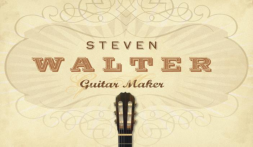SCHEDULE
(subject to change)
(subject to change)
All events are taking place at
Old Town School of Folk Music
909 W Armitage Ave, Chicago, IL 60614
Parking: https://www.parkwhiz.com/
Click here for accommodation options
Old Town School of Folk Music
909 W Armitage Ave, Chicago, IL 60614
Parking: https://www.parkwhiz.com/
Click here for accommodation options
-
Festival Schedule
-
Competition Schedule and Program
-
Concert Program June 7th
-
Concert Program June 8th
-
Masterclass Schedule
<
>
Friday, June 7th
6:00-7:00pm Registration, Lobby
7:30pm Concert: Kenny Reichert and Ana Everling, Hall
Saturday, June 8th
10am-6pm Vendor exhibition, Parlor
9am-3:00pm Competition, 1st round, Hall and Room A
3:00-4:00pm Social Hour and Career in Music Panel, Room A
4:00-5:00pm Ensemble rehearsal, Room A
4:00-6:00pm Masterclass with Denis Azabagic, Hall
7:20pm Awards Ceremony for Junior and Senior Divisions
Collegiate and Open Division Finalists will be announced, Hall
7:30pm Concert: Bokyung Byun, Hall
Sunday, June 9th
10:00am-4:00pm Vendor exhibition, Parlor
10:00am-12:30pm Masterclass with Bokyung Byun, Hall
10:00am-12:30pm Masterclass with Denis Azabagic, Room 1
11:00am-12:00pm Ensemble rehearsal, Room A
2:30pm-4:45pm Collegiate and Open division finals, Hall
5:00pm Ensemble performance and Awards Ceremony, Hall
6:00-7:00pm Registration, Lobby
7:30pm Concert: Kenny Reichert and Ana Everling, Hall
Saturday, June 8th
10am-6pm Vendor exhibition, Parlor
9am-3:00pm Competition, 1st round, Hall and Room A
3:00-4:00pm Social Hour and Career in Music Panel, Room A
4:00-5:00pm Ensemble rehearsal, Room A
4:00-6:00pm Masterclass with Denis Azabagic, Hall
7:20pm Awards Ceremony for Junior and Senior Divisions
Collegiate and Open Division Finalists will be announced, Hall
7:30pm Concert: Bokyung Byun, Hall
Sunday, June 9th
10:00am-4:00pm Vendor exhibition, Parlor
10:00am-12:30pm Masterclass with Bokyung Byun, Hall
10:00am-12:30pm Masterclass with Denis Azabagic, Room 1
11:00am-12:00pm Ensemble rehearsal, Room A
2:30pm-4:45pm Collegiate and Open division finals, Hall
5:00pm Ensemble performance and Awards Ceremony, Hall
Collegiate and Open Division Finals
June 9, 2024 2:30 pm, Concert Hall
COLLEGIATE DIVISION
Annika Nelson
Sonata in C Major, Op. 15, Allegro Spiritoso - M. Giuliani
Sonata K178 - D. Scarlatti
William Tanner
Mazurka Appassionata - A. Barrios Mangore
Sonata K1 - D. Scarlatti
Etude XII - H. Villa-Lobos
Flavius Wagner
BWV1003 Allegro - J.S. Bach
Tres piezas espanolas: 2. Passacaglia, 3. Zapateado - J. Rodrigo
Sonya Wert
Sonata for Solo Violin No. 2 in A Minor, BWV 1003: IV. Allegro - J.S. Bach
Sonata in A Major, Opus 3, No. 1 - N. Paganini
Nail-Biter - Thomas Flippin
OPEN DIVISION
Leonela Alejandro
Equinox - T. Takemitsu
Appassionata - R. Miranda
Diego Emilio Chavarria Rosas
II.- Allegro non troppo from Sonata III - Manuel M. Ponce
Fragmentos - Mauricio Garcia
II. Scherzo & IV. Finale from Sonata Op. 47 - Alberto Ginastera
Chandler Dillingham
La Rose, Op. 46, No. 9 - Mauro Giuliani
El Rey Don Alonso del Bueno, Op. 177, No. 5 - Mario Castelnuovo-Tedesco
Gigue from Cello Suite No. 2 in D Minor, BWV 1008 - Johann Sebastian Bach
Fuego - Jose Maria Gallardo del Rey
Alberto Quintanilla
Etude No. 8 - Giulio Regondi
Sonata Op. 47: *II. Scherzo *III. Canto *IV. Finale - Alberto Ginastera
Ana Everling and Kenny Reichert
Doina "Rândune"
(Traditional)
Vocalize
(A. Everling)
Carol
(Traditional)
Baby Birds
(Z. Tkach)
Dans
(A. Everling)
Lullaby
(T. Chiriac)
Paparudǎ
(D. Voiculescu)
Take Me God
(A. Everling)
Creshti Pǎdure
(A. Everling)
Toaca
(Traditional)
Doina "Rândune"
(Traditional)
Vocalize
(A. Everling)
Carol
(Traditional)
Baby Birds
(Z. Tkach)
Dans
(A. Everling)
Lullaby
(T. Chiriac)
Paparudǎ
(D. Voiculescu)
Take Me God
(A. Everling)
Creshti Pǎdure
(A. Everling)
Toaca
(Traditional)
Bokyung Byun
Mario Castelnuovo-Tedesco
Tre Preludi Mediterranei:
Serenatella
Nenia
Danza
Vicente Asencio
Collectici intim:
La Serenor
La Joia
La Calma
La Gaubanca
La Frisanca
Celil Refik Kaya
Sonatina:
Andante
Adagio
Allegro
Radamés Gnattali
Brasiliana No. 13:
Samba bossa-nova
Valsa
Choro
Mario Castelnuovo-Tedesco
Tre Preludi Mediterranei:
Serenatella
Nenia
Danza
Vicente Asencio
Collectici intim:
La Serenor
La Joia
La Calma
La Gaubanca
La Frisanca
Celil Refik Kaya
Sonatina:
Andante
Adagio
Allegro
Radamés Gnattali
Brasiliana No. 13:
Samba bossa-nova
Valsa
Choro
Saturday June 8th
Denis Azabagic
4:00 Suvan Agarwal
4:30n Audrey Oden
5:00 Diego Emilio Chavarria Rosas
5:30 Andreas Hofer
Sunday June 9th
Bokyung Byun (Concert Hall)
10:00 Avyukth Bharathi
10:20 Ryan Ivanov
10:40 Jay Yum
11:00 Ramon Fermin
11:30 Nicholas Martin
12:00 John Barnicle
Denis Azabagic (Room 1)
10:00 Kyle Gilbertson
10:30 Ben Lurye
11:00 Xuanyi Nick Liu
11:30 Cong Shi
12:00 Flavius Wagner
Denis Azabagic
4:00 Suvan Agarwal
4:30n Audrey Oden
5:00 Diego Emilio Chavarria Rosas
5:30 Andreas Hofer
Sunday June 9th
Bokyung Byun (Concert Hall)
10:00 Avyukth Bharathi
10:20 Ryan Ivanov
10:40 Jay Yum
11:00 Ramon Fermin
11:30 Nicholas Martin
12:00 John Barnicle
Denis Azabagic (Room 1)
10:00 Kyle Gilbertson
10:30 Ben Lurye
11:00 Xuanyi Nick Liu
11:30 Cong Shi
12:00 Flavius Wagner












